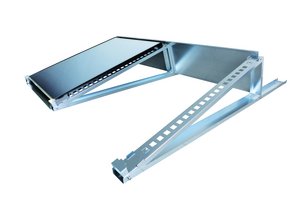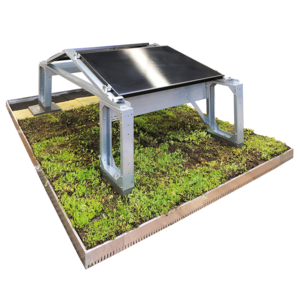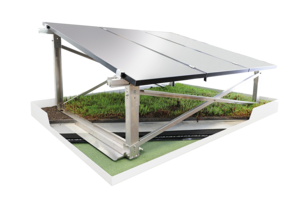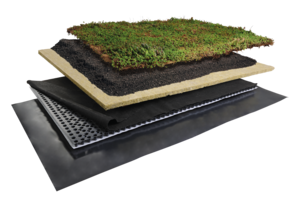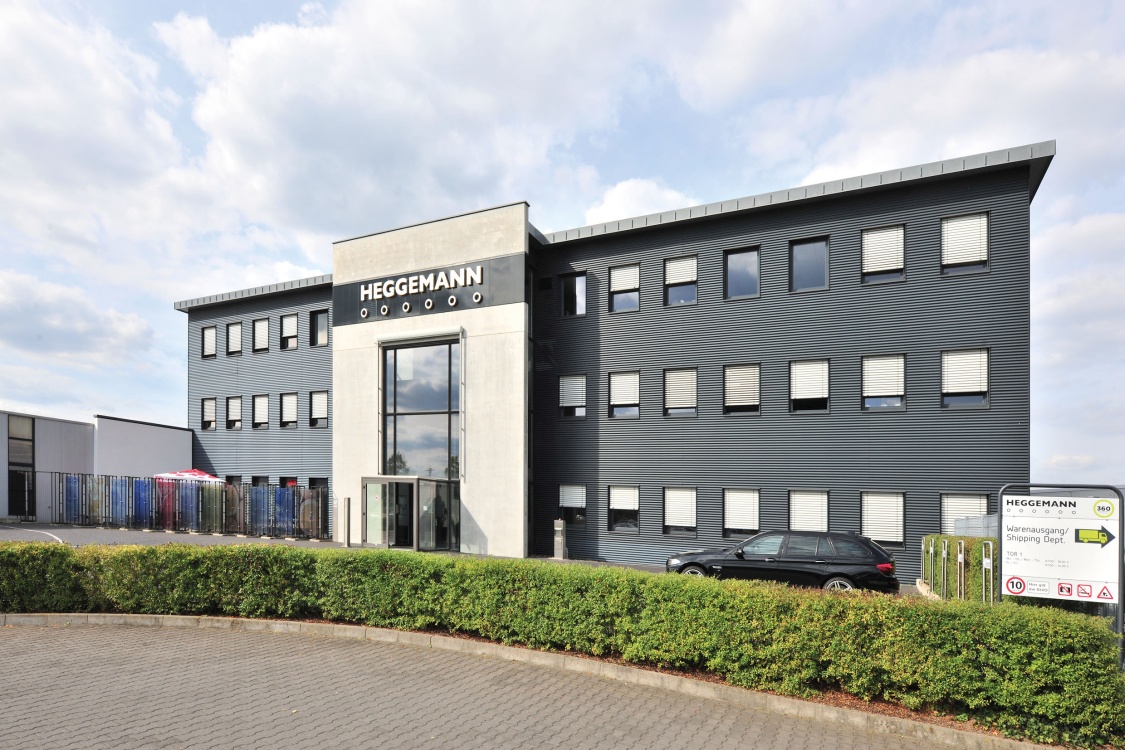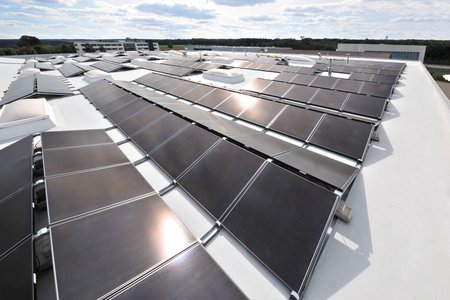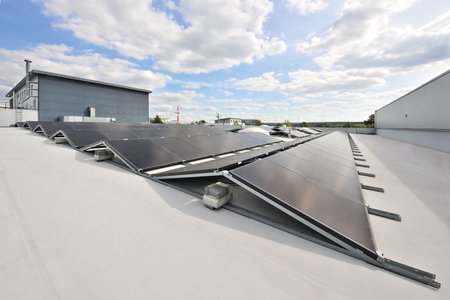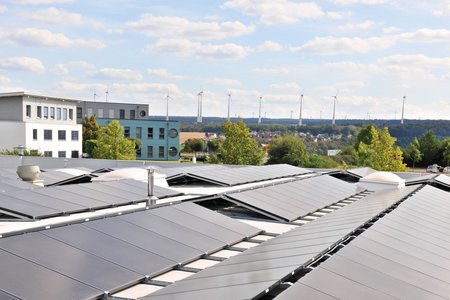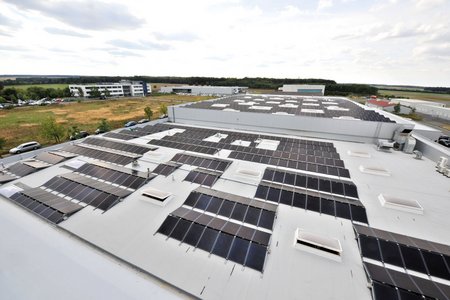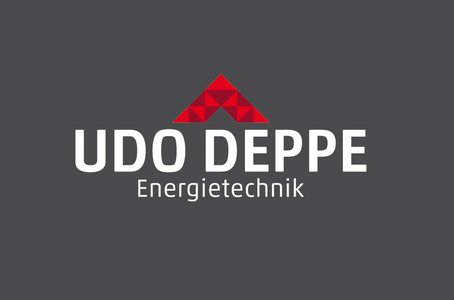The geographic location of HEGGEMANN AG already reflects the company’s focus: based at Paderborn Lippstadt Airport, this supplier specialises in the aerospace and automotive industries. The development and production partner for custom lightweight construction greatly values sustainability both in its technologies and in the production process. In order to produce its innovative solutions in an environmentally friendly way, HEGGEMANN AG had a photovoltaic system installed on its flat roofs, which offer the required load-bearing capacity and alignment.
Adapted solution
As a specialist in energy generation using photovoltaic technology, the company Udo Deppe Energietechnik planned the layout of the systems on the roofs of the production halls. The team has many years of experience implementing solar energy projects. To ensure the photovoltaic systems are held securely in place, the experts often use solar substructures from Richard Brink GmbH & Co. KG. And it was no different this time for HEGGEMANN AG: the project implementers and metal products manufacturer worked together even during the planning phase in order to come up with a solution that was tailored to the location and circumstances. A structure was needed that would lend itself to the use of CIS modules. These modules are able to use an especially large part of the light spectrum and are therefore less dependent on weather conditions than conventional technologies.
Precisely mounted
Udo Deppe Energietechnik was able to meet this requirement using solar substructures from Richard Brink GmbH & Co. KG. The Miralux elements can be tailored precisely to the solar modules, resulting in ideal mounting. The type 3 product installed for HEGGEMANN allows cells to face east-west at a 15° angle. Made from sheet steel with a Magnelis® coating, the system is hard-wearing and resistant to weather influences. Its aerodynamic structure ensures stability. ‘The solution from Richard Brink offers excellent quality with an excellent price-performance ratio. What’s also impressive is its fast, easy and precise mounting,’ says Stefan Hajnal, Managing Director of Udo Deppe Energietechnik.
The substructures are designed to save space during transport and on the building site. The individual rows are easy to connect without having to use special tools thanks to their ‘plug-in and fold’ mechanism. Guide elements and locking hooks adapted to the modules make it easier to position and connect the modules and also provide additional hold. Thanks to integrated channels on the base supports, the entire structure can be cabled properly. Compared to conventional systems, these substructures are up to 75% lighter and therefore reduce the distributed load. Only a few concrete weights are required as ballasts for the solar substructures. Since installation can be completed without penetrating the roof cladding, the membrane of the flat roof remained undamaged during setup. In total a nominal system output of over 372 kWp was achieved using 2,256 modules in connection with 1,310 Miralux elements.
Finished in no time
Thanks to the easy handling of the Miralux products and intensive cooperation between the installers and the manufacturer, the project was completed extremely quickly. ‘The on-site advice from Richard Brink was excellent, as was our joint planning,’ Stefan Hajnal concluded. The client is also impressed with the result – Peter Berhorst, general manager of HEGGEMANN AG, summarises: ‘The outstanding industry knowledge brought to the project by Udo Deppe Energietechnik GmbH was clear in the installation of the photovoltaic system. The project was implemented quickly and precisely with the highest level of craftsmanship. The performance capability of the entire system has exceeded our expectations.’ The energy generated by the photovoltaic system goes directly into HEGGEMANN AG’s production, reducing operating costs. As a user of regenerative energy, the company has truly earned its ÖKOPROFIT award.
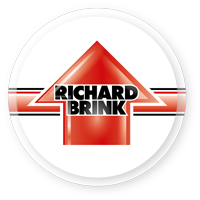
![[Translate to Englisch:] PV-Unterkonstruktionen der Firma Richard Brink in Ost-West-Ausrichtung auf Flachdach mit Kiesschüttung. Zeigt die gesamte Konstruktion bestehend aus Solarpanel, Befestigung an der Unterkonstruktion und Ballastierung.](/fileadmin/user_upload/MiraluxFlex_OW_Header.jpg)
![[Translate to Englisch:] PV-Unterkonstruktion "Miralux Flex" der Firma Richard Brink in Ost-West-Ausrichtung mit allen Einzelteilen inklusive Ballastierung und Modulklemmen.](/fileadmin/_processed_/8/9/csm_2_Mi_FS_02_9fd74a9e97.png)
![[Translate to Englisch:] PV-Unterkonstruktion von Richard Brink in Ost-West-Ausrichtung. Zeigt die Anbringung des Solarpanels oberhalb der Unterkonstruktion.](/fileadmin/_processed_/e/c/csm_MiraluxFlex_OW_Slider_4682fdfb69.png)
![[Translate to Englisch:] Zwei Ballastierungssteine aus Polymerbeton der Firma Richard Brink zur Ballastierung von Photovoltaik-Unterkonstruktionen. Große Variante mit 34 kg, kleine Variante mit flacher Bodenplatte (16 kg) zum Einbringen in Kiesbetten oder Gründächer](/fileadmin/_processed_/7/d/csm_2_Mi_FS_03_9ca2a7f2ca.png)
![[Translate to Englisch:] Ballastierungsunterstützung der Firma Richard Brink. Gekantetes Blech zur Einlage von Betonplatten oder Steinen, um Photovoltaik-Unterkonstruktionen zu beschweren.](/fileadmin/_processed_/9/f/csm_2_Mi_FS_04_6e016a396e.png)
![[Translate to Englisch:] Grafische Darstellung der Verschraubung von Ballastierungssteinen unterhalb der PV-Unterkonstruktion. Flache Bodenplatte des Steins liegt unterhalb von Kies und Bepflanzung.](/fileadmin/_processed_/a/6/csm_2_Mi_FS_06_44d13c3c81.png)
